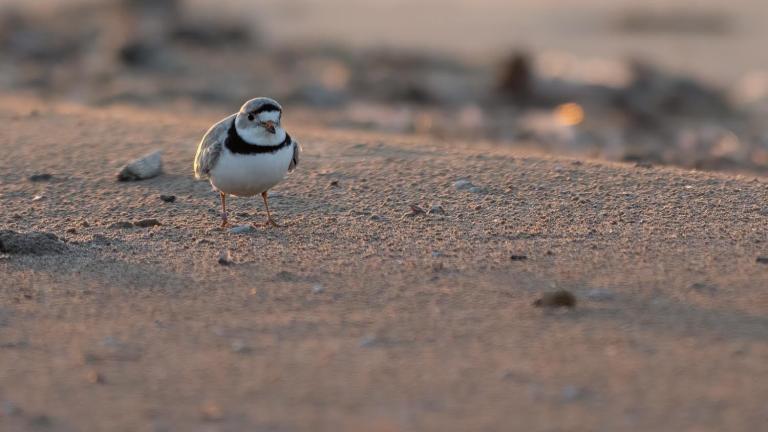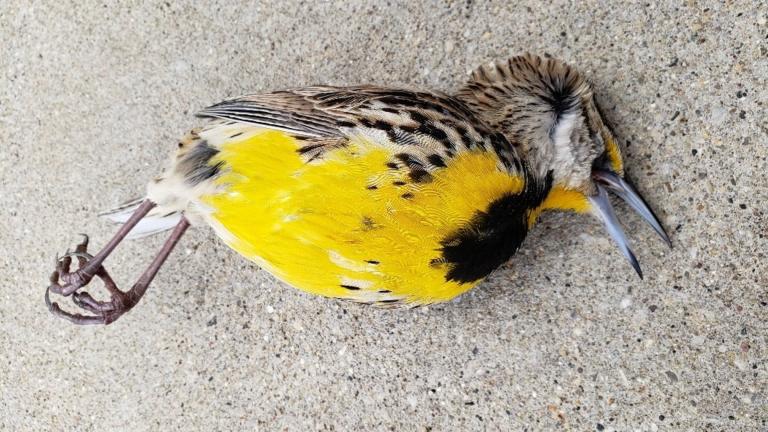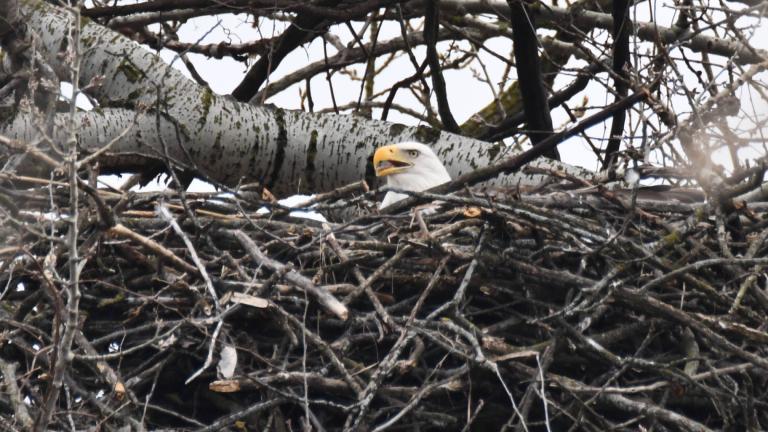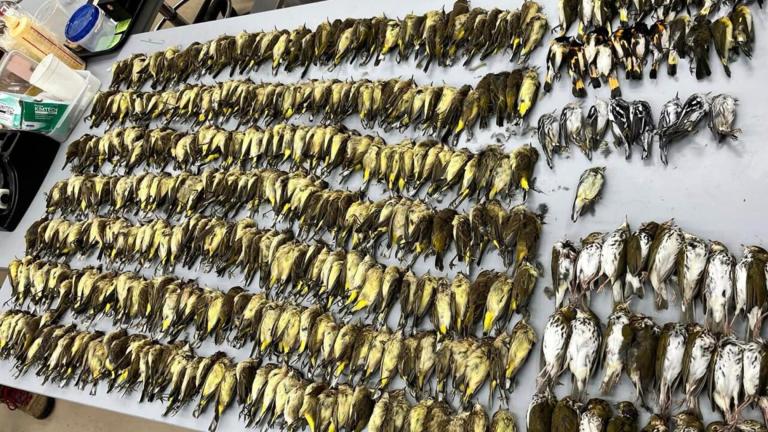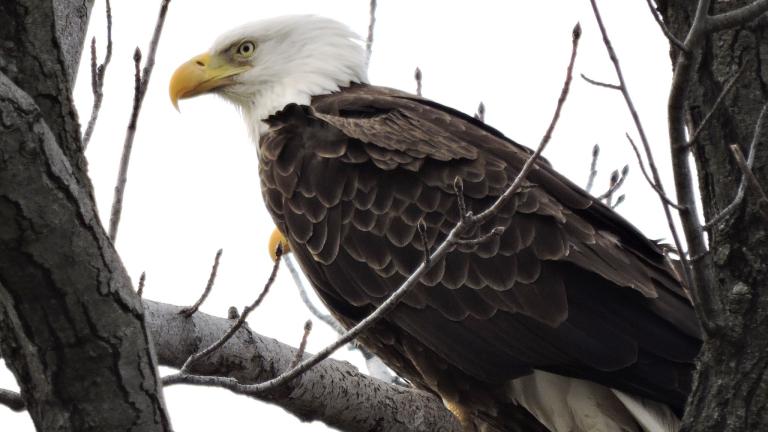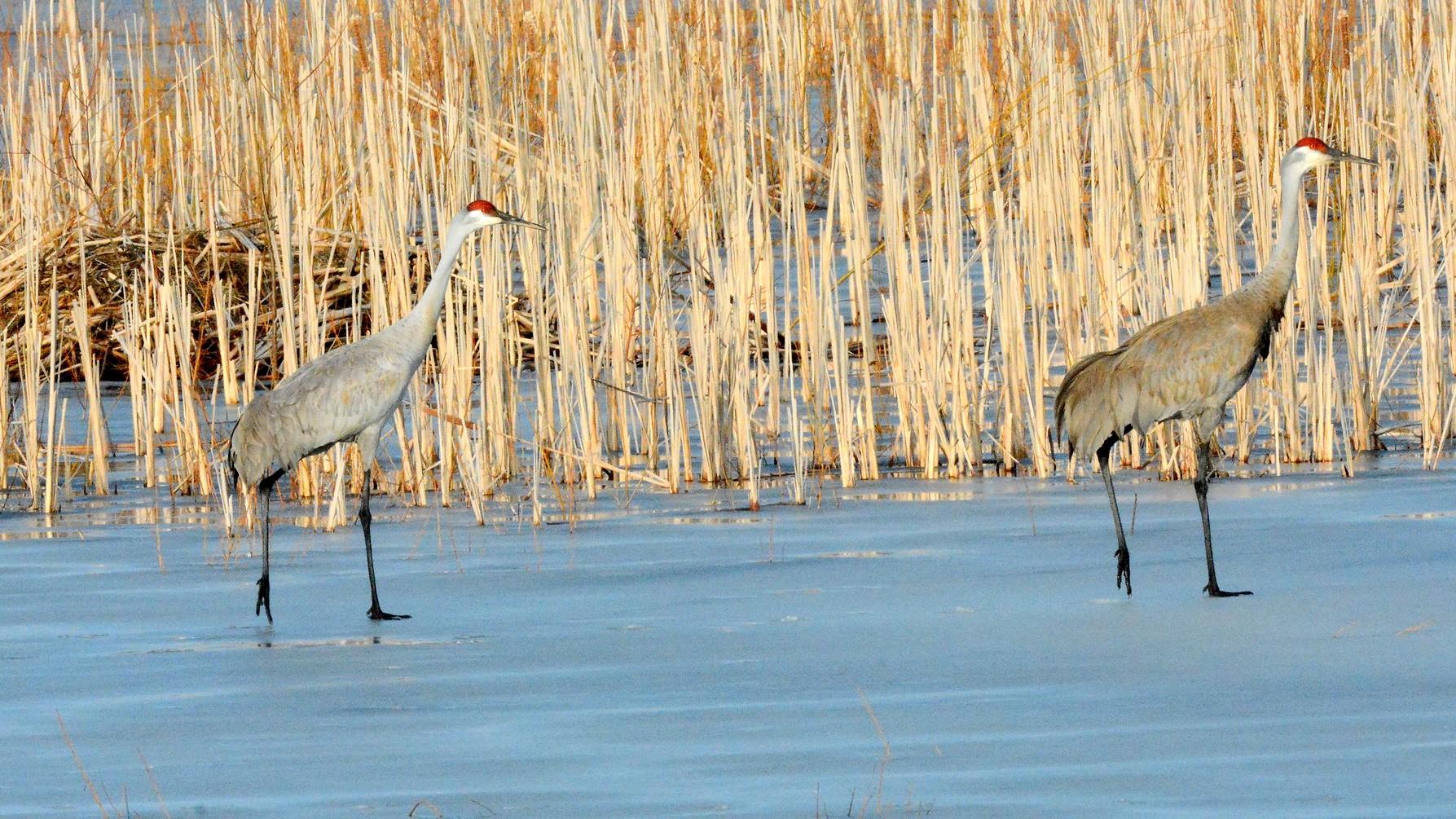 Sandhill cranes. (U.S. Fish and Wildlife Service Midwest Region)
Sandhill cranes. (U.S. Fish and Wildlife Service Midwest Region)
They’re back.
Red-winged blackbirds, American robins, and sandhill cranes are among the species of birds Chicagoans have spotted in recent days on the leading edge of spring migration.
But wait — according to the calendar, it’s still winter.
Is it too early for birds to be journeying north?
As they share images online of their latest sightings, birders and casual observers alike have been debating whether the timing is indeed off.
Some are attributing the early arrivals to a warmer El Nino weather pattern. Others say it’s a more insidious sign of climate change — “We know we’ve really screwed up the environment when you see a robin in Chicago in the first half of February,” one North Sider posted to social media — while a third faction is insistent that such sightings this time of year are nothing out of the ordinary.
The truth, experts say, is “all of the above.”
“I tend to warn people against jumping to conclusions,” said Stephanie Beilke, senior manager of conservation science at Audubon Great Lakes. “But I’m glad people are paying attention.”
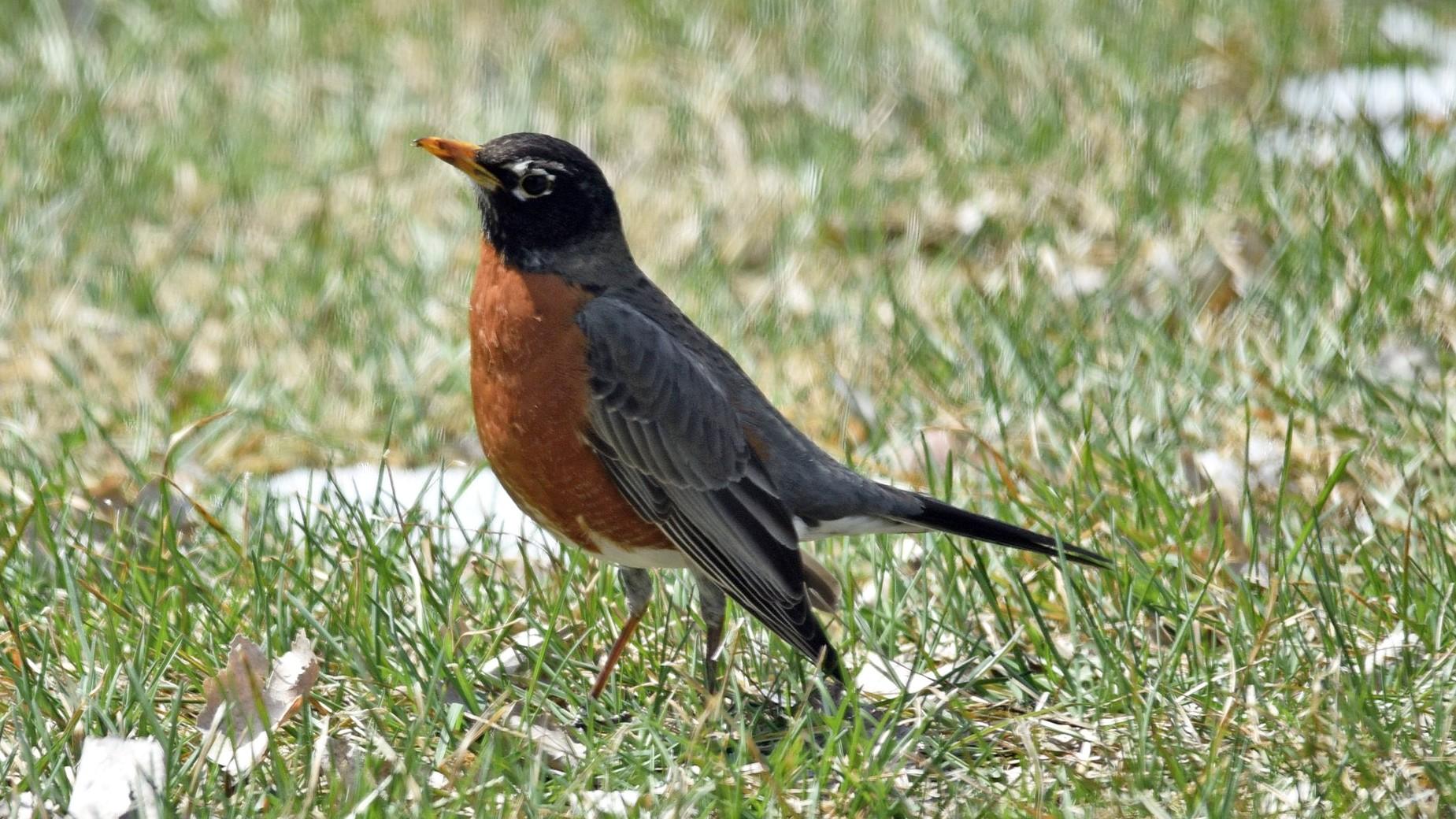 Robins used to be considered harbingers of spring, but plenty live in Chicago year-round. (U.S. Fish and Wildlife Service Midwest Region)
Robins used to be considered harbingers of spring, but plenty live in Chicago year-round. (U.S. Fish and Wildlife Service Midwest Region)
When it comes to migration, most people’s general understanding of the phenomenon is an oversimplified version of a complex process, said Edward Warden, president of the Chicago Ornithological Society.
While the notion of birds winging their way north to Canada and the U.S. in the spring, and then heading to Central and South America in the fall, holds true for some migratory species, the movement of others is more variable, Warden said.
Robins — long labeled “harbingers of spring” — do migrate, but plenty also stick around Chicago year-round. Same for red-winged blackbirds. Others, like great blue herons, will adjust on the fly, so to speak.
“If it’s cold and water freezes, they leave. If it doesn’t, they stay,” Warden said. “They’re thinking, ‘If I don’t have to migrate, why should I?’ Why should they spend all that energy if they don’t have to? Birds are moving as they see fit. Patterns are not strict or the same year to year.”
For those that do leave Chicago, “southern” migration might actually only mean a hundred miles or so, into central or southern Illinois and Indiana, where it’s slightly warmer and food is more available.
These species, including the red-winged blackbird, are typically the first birds seen in Chicago, having a much shorter distance to cover, according to Beilke.
“Seeing a red-winged male in February is not particularly unusual in Chicago,” she said, noting that while the females won’t show up until May, the fellas are in a rush to stake out prime breeding territory.
Indeed, Beilke said she always records a red-winged blackbird during the annual Great Backyard Bird Count, which takes place in mid-February. (The count is currently underway through Feb. 19. Click here for info on how to participate.)
A sizeable number of sandhill cranes also overwinter in lower Illinois and Indiana. “These birds,” Beilke said, “have more flexibility with their timing and can pick up on weather cues.”
And if they misjudge those cues, some have been known to turn back, she said, while adding that “we do see mortalities happening” during snowstorms in late March or April.
 Male red-winged blackbirds arrive in Chicago in February to scope out the best breeding sites. (U.S. Fish and Wildlife Service Midwest Region)
Male red-winged blackbirds arrive in Chicago in February to scope out the best breeding sites. (U.S. Fish and Wildlife Service Midwest Region)
That said, it has been an unusual year weather-wise, Beilke acknowledged, and some birds could be responding to the milder than normal temperatures.
It’s hard even for scientists like herself to tell the difference between behavior influenced by one-off weather events and climate change, Beilke said.
This is why researchers rely on long-term data sets such as the Christmas bird count (which dates back to 1900), the backyard count and submissions to the e-bird platform, all of which help scientists stitch together a picture of which birds are found where and when.
This evidence shows that some birds, among them Swainson’s thrush — which passes through Chicago on its journey — are indeed now migrating earlier than they did 60 years ago. The concern from a timing standpoint, Beilke said, is that if birds move sooner, they might not find corresponding food resources along their route.
Other birds are expanding their breeding range further north, including arctic birds that could literally run out of room at some point, Beilke said. And still other species are vulnerable if climate change significantly alters their breeding environment.
Beilke pointed to the red-headed woodpecker as one such species to watch. Hot summers and drought could make their current range — temperate North America — inhospitable and push the birds into northern Canada. The problem, Beilke said, is that these woodpeckers eat a lot of acorns and beech nuts, and if the birds wind up in Canada’s pine forests, they won’t find what they need.
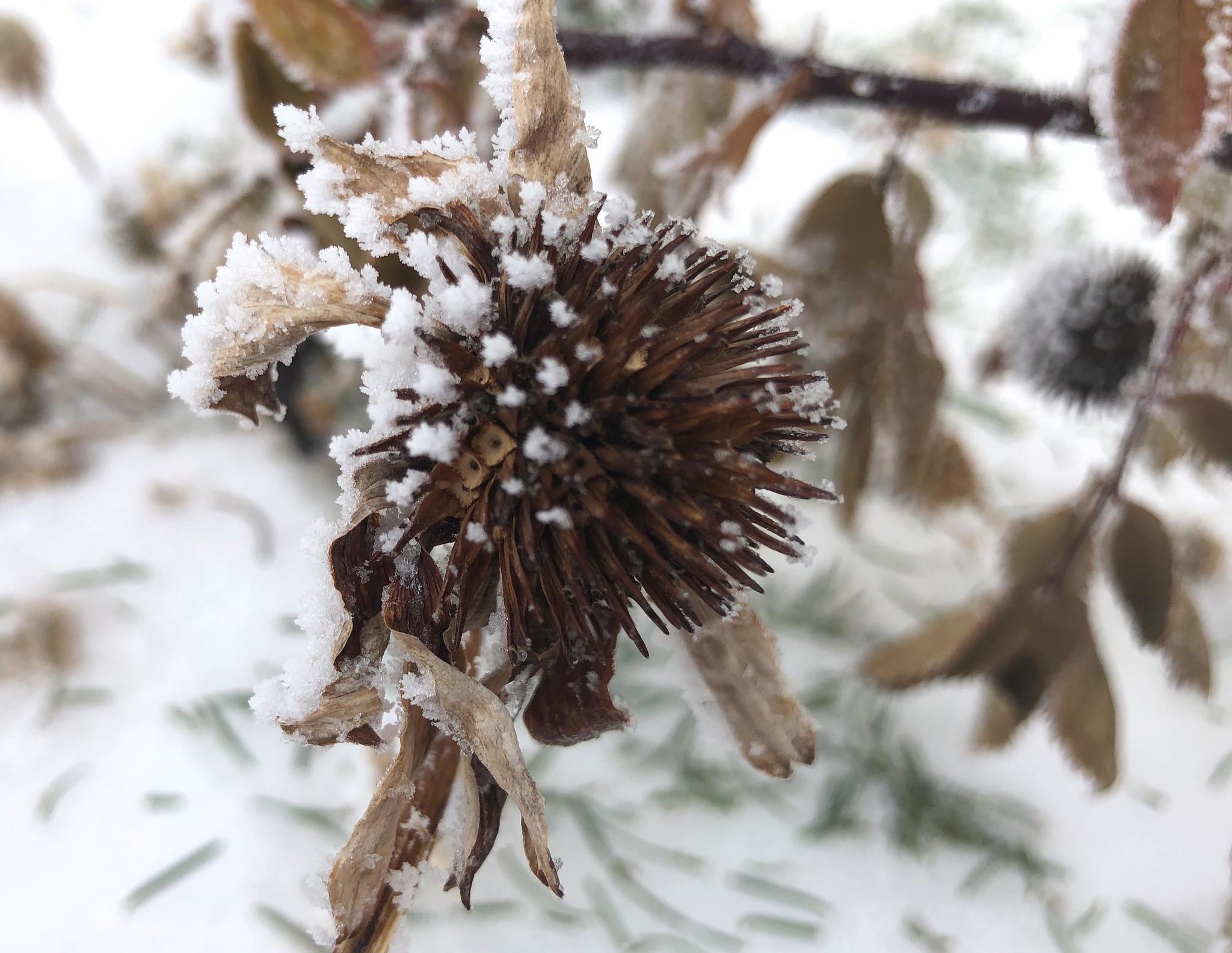 The seed heads of native plants like echinacea (coneflower) can provide food for early migrating birds. (Alan Levine / Flickr Creative Commons)
The seed heads of native plants like echinacea (coneflower) can provide food for early migrating birds. (Alan Levine / Flickr Creative Commons)
The bottom line, Beilke said, is that’s it’s normal to see certain birds return to Chicago in February, but there are signs that some species are migrating earlier.
Long term, we can help birds by preventing further climate change, she said, but in the short term there are things people can do to make Chicago more comfortable for these early birds.
One option is to put out suet feeders during “false spring,” when insects are scarce, Beilke said. Another is to make yards more resilient — less grass, more native plants. And choose natives that provide fruit or seeds — just be sure not to “tidy up” the garden in the fall and snip off all the seed heads.
Finally, protect the region’s parks, forest preserves and other natural areas, which provide birds with vital oases, Beilke said.
As for whether Chicagoans are truly seeing birds earlier in 2024, Beilke said what matters most is that people are asking.
“I’m glad people are paying attention,” she said. “We need to keep our eye on things that seem odd. If you’re seeing something, you’re probably not the only one.”
Contact Patty Wetli: @pattywetli | (773) 509-5623 | [email protected]

